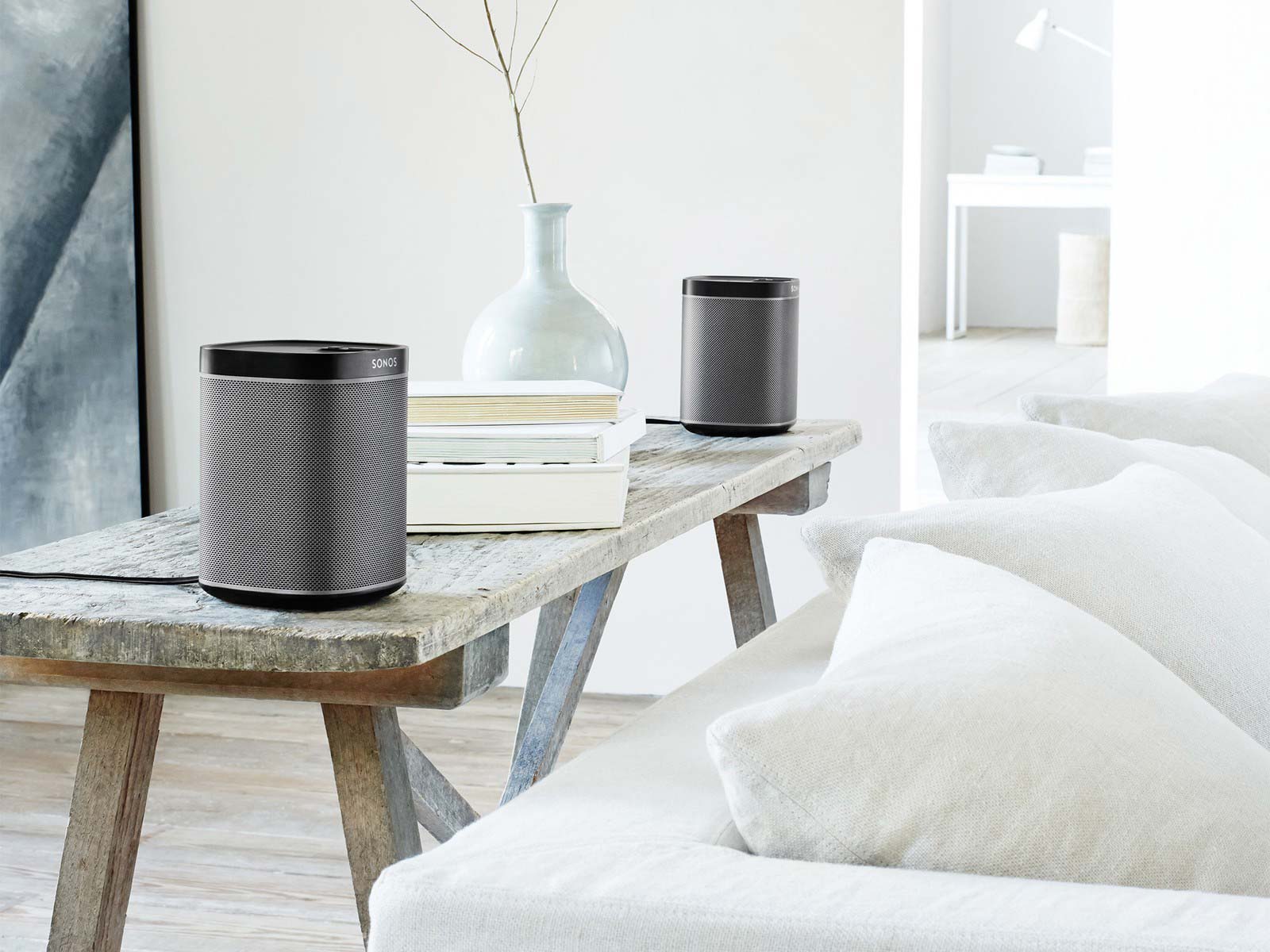A few years ago, shopping for the best smart speakers for home was easy. Just click the order button on the original Amazon Echo product page and that’s it. Now, with more products on the market, shopping for one is no longer as straightforward, and that’s actually a good thing because you have the chance to buy the product that best addresses your needs.
In this guide, we’ll help you shop for smart speakers. Almost all of the products you’ll find here are powered by either Amazon’s Alexa or Google Assistant, the top virtual assistants currently out. Although your choice will probably come down to whether you prefer Alexa or Google Assistant, there are other aspects you need to consider – like the product’s form factor, ease of use, sound quality, and price. Consider each product’s strengths and weaknesses first before you open your wallet.
Even with their limits, smart speakers are incredibly useful devices, especially if you also own a number of smart home appliances they can pair with. Here are the best smart speakers that you can get right now, arranged from the most budget-friendly down to the most expensive:
 Amazon Echo Dot (2nd Gen)
Amazon Echo Dot (2nd Gen)
With the Echo Dot, you can play music, control compatible smart home devices, set alarms, check the weather, and make calls, among many other functions. It’s a compact and lightweight device that can easily recognize your voice and process valid commands in a timely manner. It can use thousands of skills, including the ability to play trivia games and request an Uber ride.
The Echo Dot’s most notable weakness is its sound quality, which isn’t exactly surprising considering its small size. It’s not an ideal smart speaker for music lovers. The good news is that it can connect with external speakers via a standard 3.5-millimeter audio cable, allowing you to pair it with a more impressive sound system.
If you want the best budget smart speaker or want to fill up your home with smart speakers without breaking the bank, check out the Echo Dot. Unless you prefer Google-based smart speakers, of course. In which case, the best option is the similarly priced Google Home Mini.
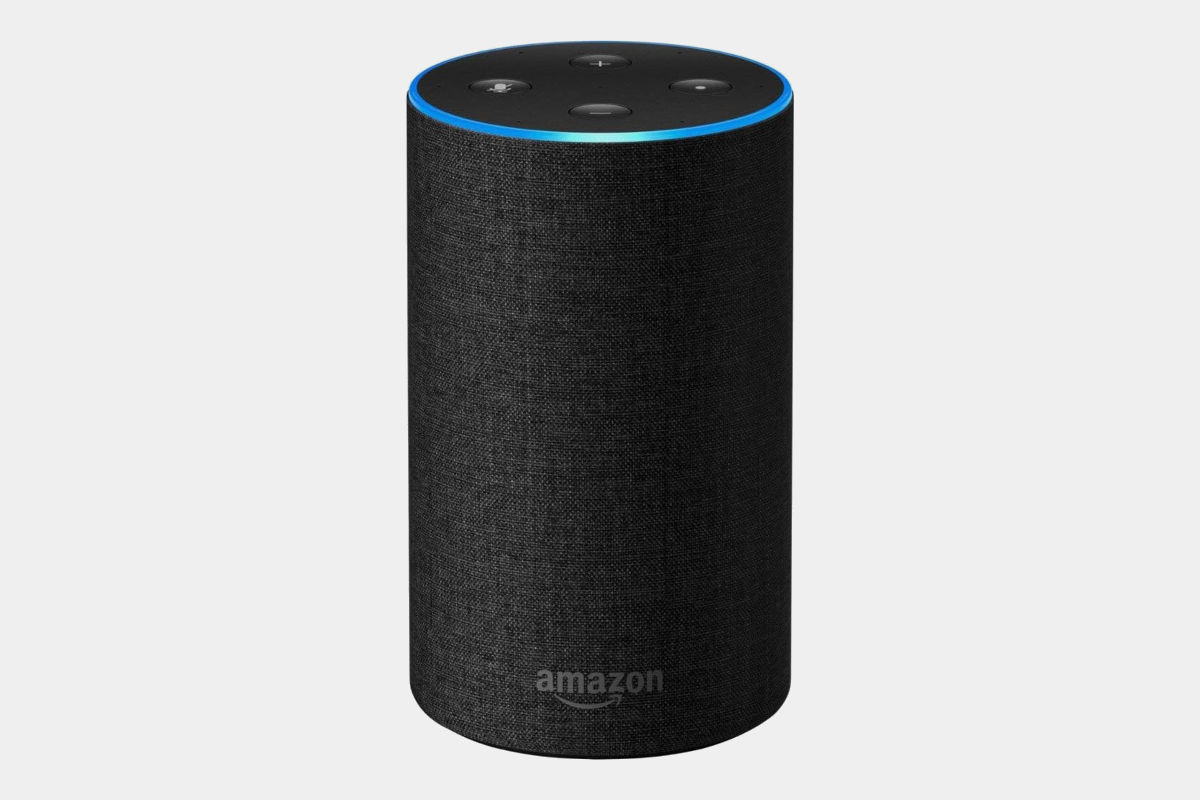 Amazon Echo (2nd Gen)
Amazon Echo (2nd Gen)
The Echo is a cylindrical device available in different finishes, allowing you to get a design that works best with your other furniture. It has the same functionality as the Echo Dot – including the ability to play music, provide weather reports and sports scores, order items from Amazon, and set reminders. It can also connect with compatible smart home devices, such as lights, thermostats, and security systems.
While the Echo is nowhere near the Sonos One in regard to sound quality, it’s definitely a step above the Echo Dot, featuring a sound system good enough to fill your bedroom with your favorite tunes. It comes with a 2.5-inch woofer and a 0.6-inch tweeter and can connect with external speakers wirelessly or via a standard wired connection.
The Echo’s search function is not as good as the Google Home’s, though. If you plan to use your smart speakers as more of a voice-controlled information provider, the Echo may not be ideal for you. But if you want the best all-around smart speaker, look no further than the Echo.
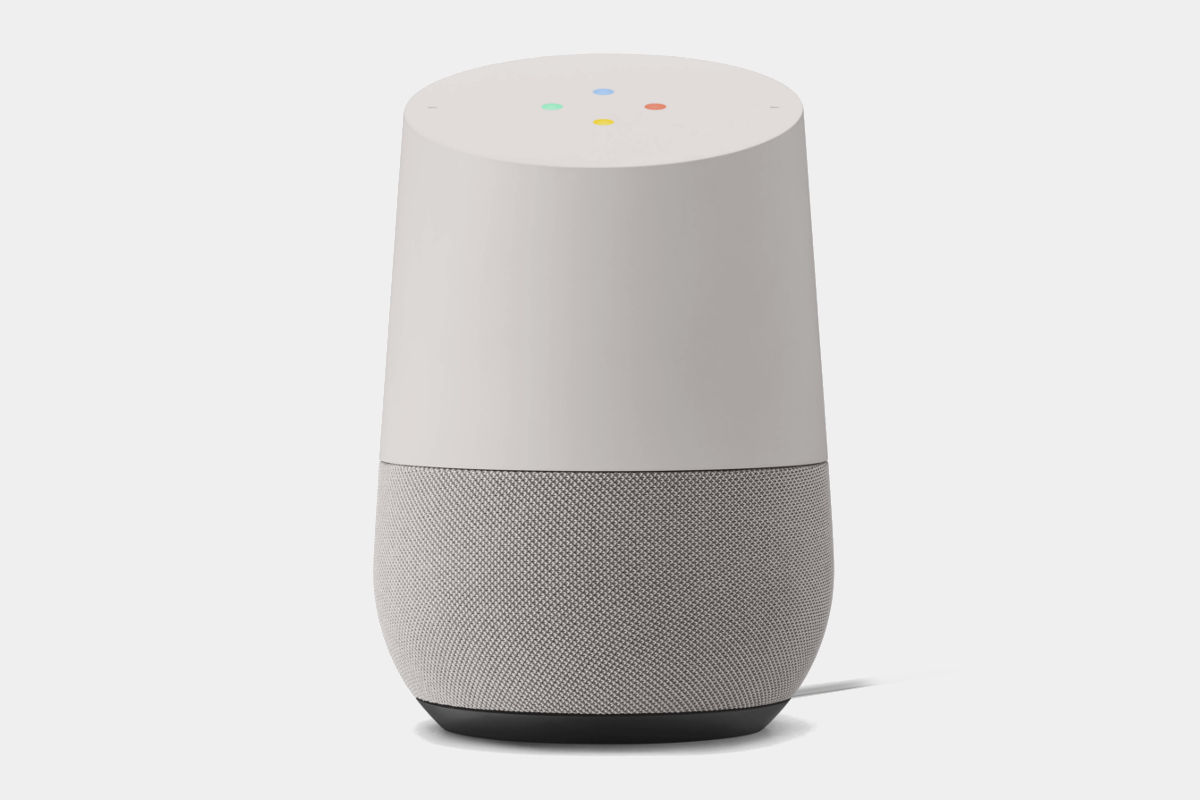 Google Home
Google Home
The Home has a good sound quality, but don’t expect it to produce the same sound quality as stereo speakers built for music. It has an excellent voice recognition and can perform a good number of tasks, which include playing music, creating shopping lists, and providing news recaps, among others. It can connect with smart home devices, although the list of compatible products is not yet on the same level as Amazon’s Echo series.
What makes the Home better than Amazon’s Alexa-equipped smart speakers is its impressive search function. That’s not exactly surprising considering it’s a Google product. With the Home, you can get all sorts of information from the internet without touching your computer or smartphone. It’s not perfect but it’s definitely ahead of other virtual assistants in that area.
If you prefer Google Assistant over Alexa and Siri, Google’s Home smart speaker is the best product for you. It’s a fairly priced device with a compact design and an intuitive interface. If you think $130 is too expensive, you can go for the Google Home Mini instead. It’s basically a downsized Google Home with a poorer sound quality.
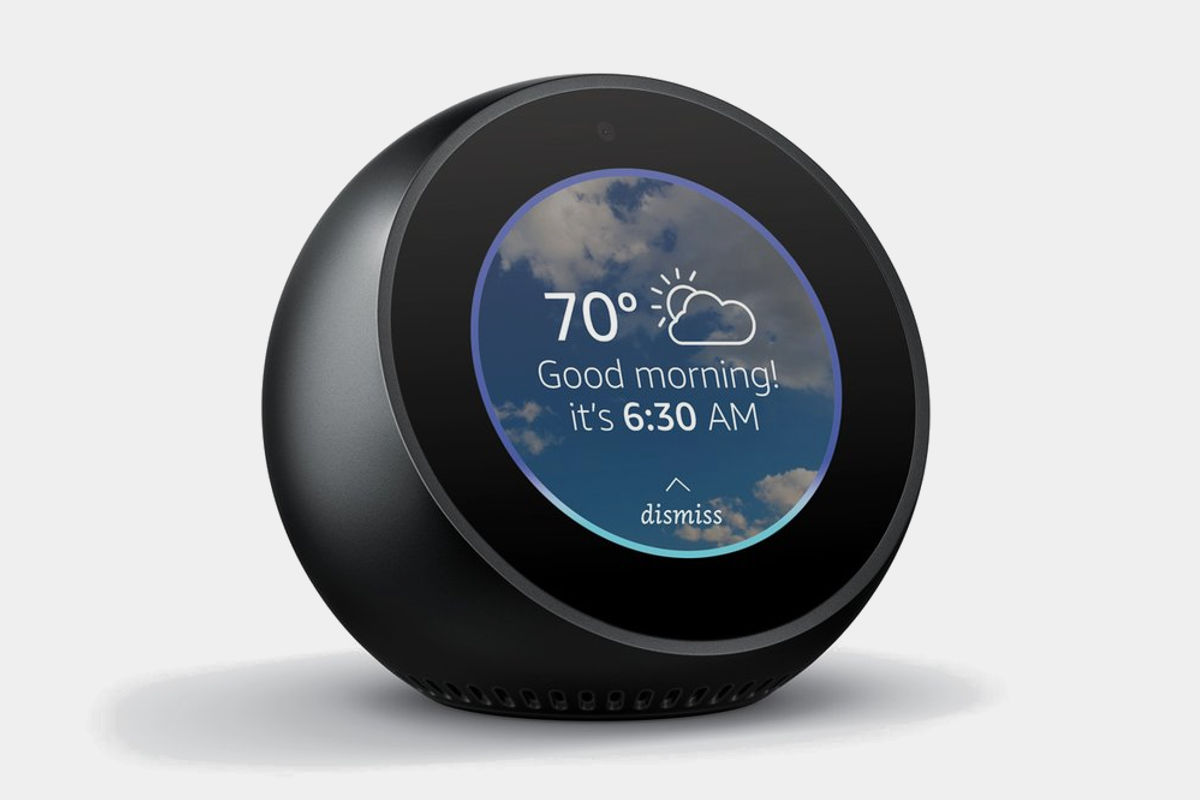 Amazon Echo Spot
Amazon Echo Spot
It has a round form with a high-quality 2.5-inch screen, separating it from the Echo Dot, Amazon’s other compact smart speaker system. It has a slightly better sound quality than the Echo Dot but falls short when up against larger smart speakers like the Amazon Echo and the Sonos One. It sells for $130, placing it in the same price range as the Google Home.
Since it comes with a built-in screen, the Echo Spot offers an even more impressive list of functions compared to other Echo smart speakers, not including the Amazon Echo Show, which is also equipped with a screen. The Echo Spot can display music lyrics and weather reports, make video calls, and show your schedule for the day. It can also connect with different compatible smart home devices, and that includes security cameras and baby monitors.
Like other Echo smart speakers, the Alexa-equipped Echo Spot lags behind the Google Home series in regard to fetching information from the internet. If that’s not a big deal for you, then definitely go for the Echo Spot if you’re in the market for a compact and relatively affordable smart speaker with a built-in screen.
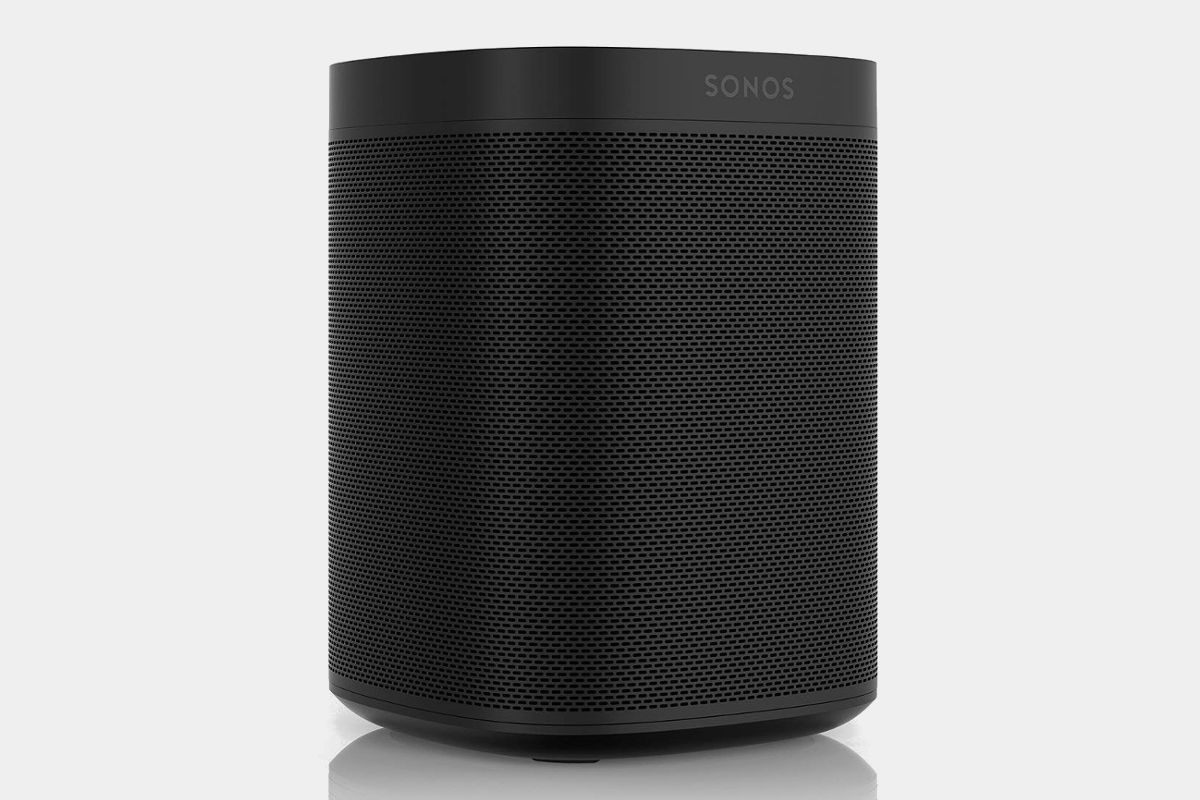 Sonos One
Sonos One
Currently, the Sonos One is an Alexa-run smart speaker. It can do most of the tasks that Echo products bring to the table, and that includes connecting with smart home devices, although the product compatibility list is more limited. If you’re not a fan of Alexa, then we have good news for you: Google Assistant is on the way for Sonos smart speakers. According to the manufacturer, support for Google’s rapidly growing virtual assistant is set to arrive later this year.
The Sonos One can play music from a variety of music and radio services, including Amazon Music, Spotify, Pandora, and Sirius XM. The amount of control you get for each music service is not the same, though. Some offer a fully voice-controlled operation. Others are more limited, only allowing basic playback options.
For music lovers, the Sonos One is the most recommended non-premium smart speaker on the market. When it comes to sound quality, it blows away all other products in the same price range, featuring a loud and clear sound with a punchy bass. If music is your primary reason for considering a smart speaker, get the Sonos One.
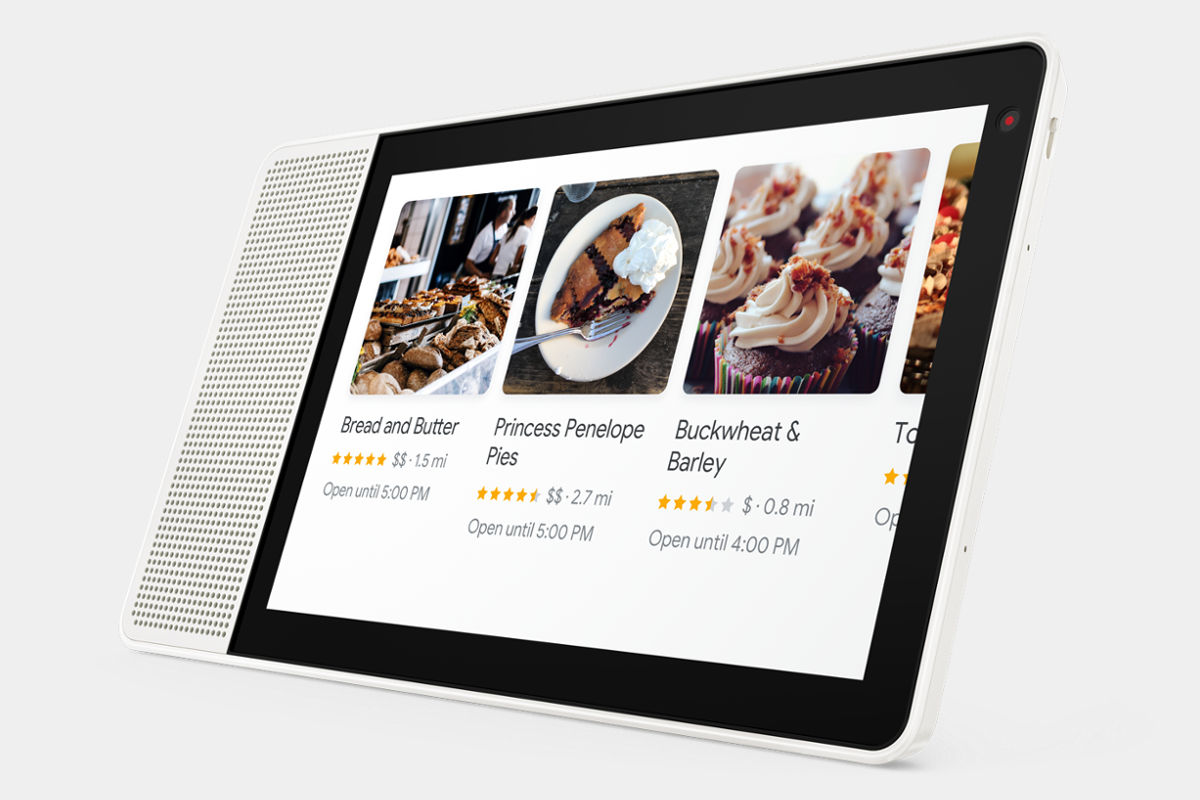 Lenovo Smart Display
Lenovo Smart Display
It’s a Google Assistant-equipped smart speaker, which means you can expect it to function just like Google’s smart speakers. But since it has a built-in screen, it offers a more interactive and convenient experience compared to the Google Home series. It can display weather updates, show recipes, create shopping lists, and play YouTube videos.
While the Echo Show offers more skills and has a better ecosystem overall, the Lenovo Smart Display has the lead when it comes to hardware. It has a better screen, first and foremost. The 8-inch model has a 1280 x 800 resolution while the more expensive 10-inch model has a 1920 x 1200 resolution. For comparison, the Echo Show is equipped with a 7-inch screen with a 1024 x 600 resolution.
The Lenovo Smart Display’s overall design is also better. It can be propped up either horizontally or vertically and comes with a built-in camera shutter for privacy. In regard to sound quality, both versions of the product are slightly better than the Echo Show, making them excellent entertainment platforms.
Perhaps the best thing about Lenovo’s smart speaker is that you don’t have to pay a wallet-burning price to get your hands on it. The 8-inch model sells for $200 while the larger 10-inch model goes for $250. If, however, those prices are well off your budget, the Echo Show, which you can get for just $130, might be the better option for you.
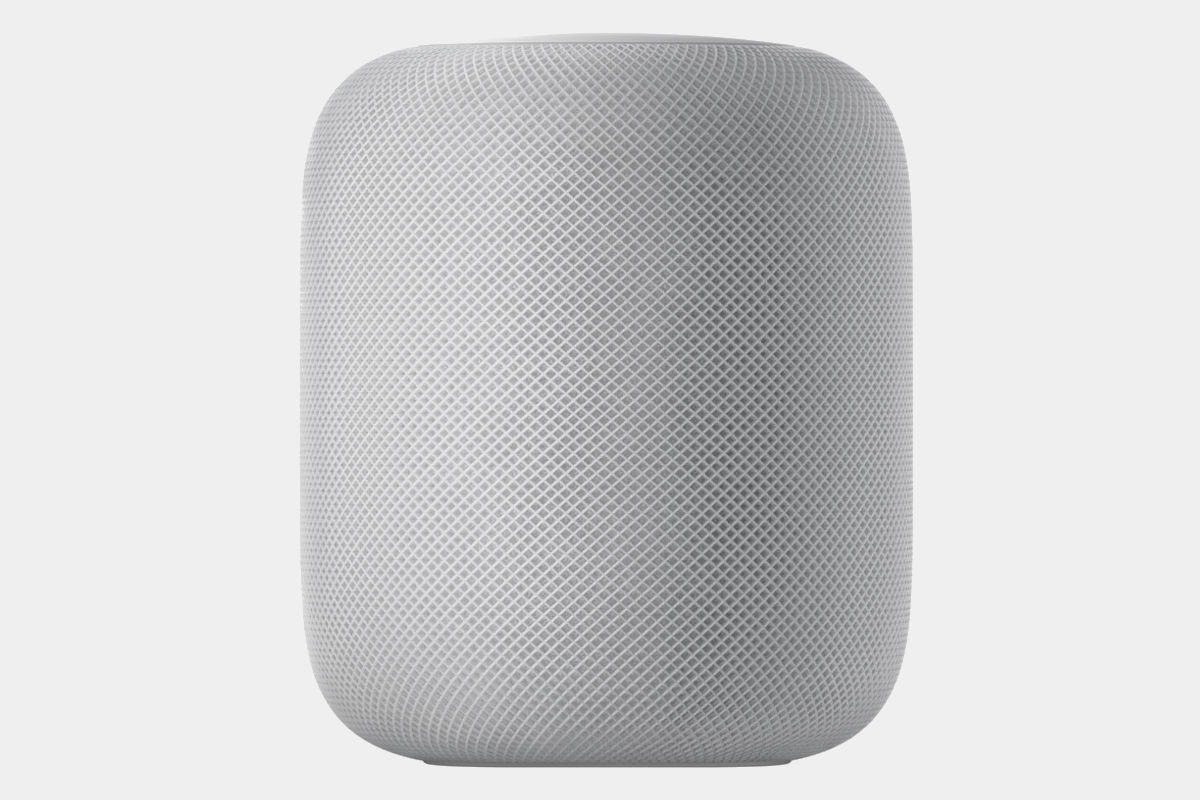 Apple HomePod
Apple HomePod
On the positive side, the HomePod is an excellent speaker for music. It has a superb sound system capable of delivering a crisp and loud audio. It can easily fill up your room with music, making it an excellent speaker for music lovers who mainly use Apple products. In addition, it’s got great voice recognition.
On the negative side, the HomePod is strictly limited to the Apple ecosystem and doesn’t offer the kind of functionality that other products bring to the table. And as mentioned, Siri is not on the same level as Alexa and Google Assistant, and it’ll probably take a while before Siri can reach that level.
As expected from an Apple product, the HomePod sells for an eye-watering amount of money. It goes for $349, which is even more alarming once you consider its limitations. If you use several Apple products and care more about a smart speaker’s sound performance, go for the HomePod. But if you want the real “smart” home experience, you’re much better off with an Alexa or Google Assistant smart speaker.
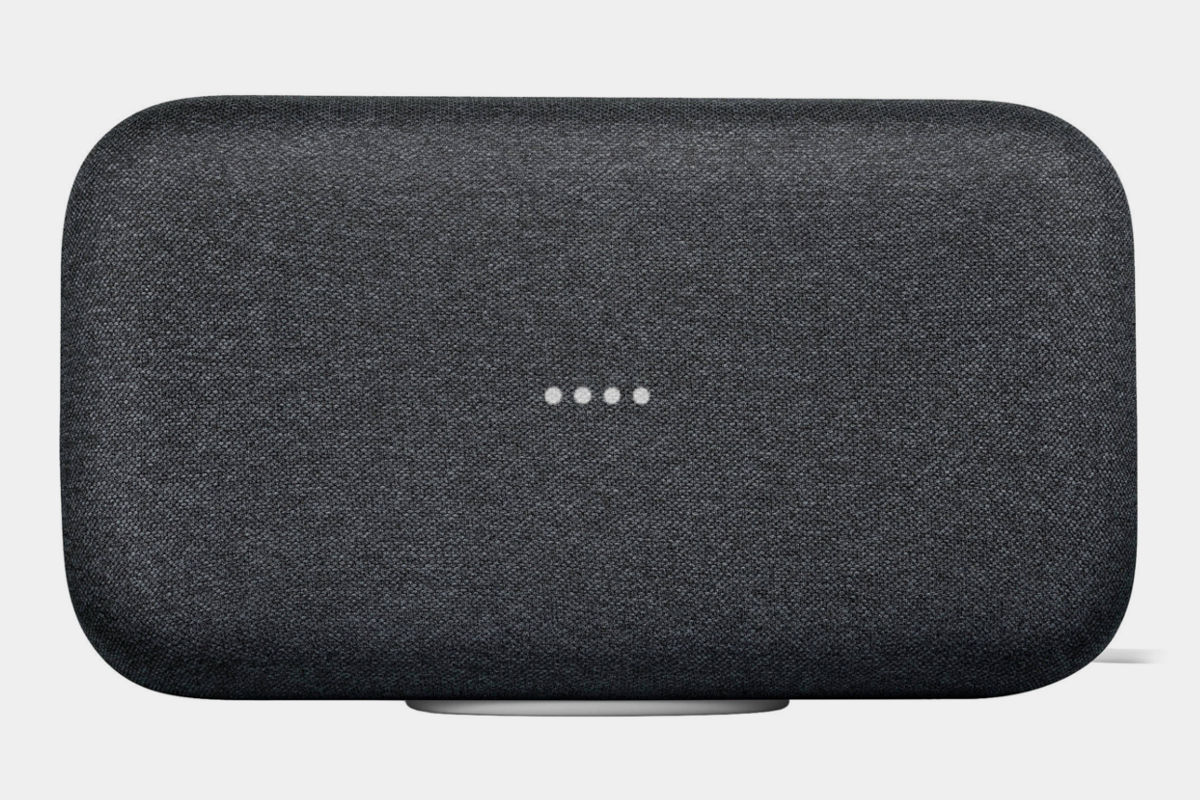 Google Home Max
Google Home Max
A Google Assistant-equipped smart speaker, the Home Max is just as smart and capable as Google’s other smart speakers, especially in regard to searching for information on the internet. It can connect with a bunch of smart home devices, allowing you to remotely control or monitor your home’s lighting, security, and ventilation systems, among others.
In addition, the Home Max also comes with the Smart Sound feature, which allows it to adjust its sound settings based on the nature of the room. It’s an intuitive feature that ensures you always get the best sound quality wherever you are. The only thing you need to worry about is your playlist.
Considering its high price point, the Home Max is not for everyone, especially those who are new to smart speakers. It’s a premium product. But unlike the similarly premium-priced Apple HomePod, the Home Max offers a lot more value, making that $400 price relatively easier to stomach. If you’re prepared to spend $400 on a great-sounding smart speaker, get the Home Max.
What is a Smart Speaker?
Smart speakers are all about convenience. They are voice-controlled, wireless-enabled devices that can perform various tasks. They can keep you updated on the weather situation, sports scores, and breaking news. They can play music, make calls, set alarms, create shopping lists, and search for info on the net. But most importantly, they can connect with other compatible smart home devices, allowing you to remotely control your home’s lighting and ventilation, among other things.
A smart speaker uses “skills,” which are basically like apps on smartphones. Amazon’s Alexa is the current leader in that regard, boasting thousands of skills that you can use to make your life easier. Smart speakers have limits, though. Or more specifically, the virtual assistants have limits. They are programmed to recognize specific voice commands. You can’t talk to them in the same way you talk to a real human – or in the same way that Tony Stark communicates with FRIDAY (or JARVIS, before he became Vision). And you can’t expect them to perform extremely complicated tasks.
Making the Pick
Your choice largely depends on how you want to use your smart speaker. (Okay, your budget is a big factor, too.) If you plan to use your smart speaker primarily for music, the Sonos One is the product for you, with the Google Home Max being the premium option. If you fancy an entry-level product, the Amazon Echo Dot is the obvious choice. If you want an all-around smart speaker that offers plenty of skills and can connect with a wide selection of smart home devices, the second-gen Amazon Echo is the best right now.
